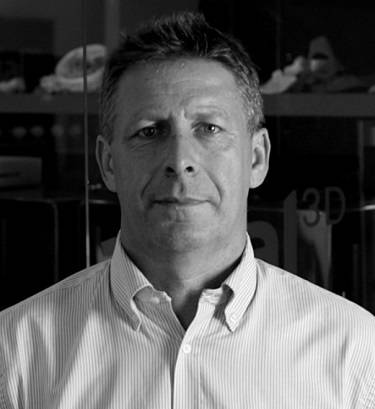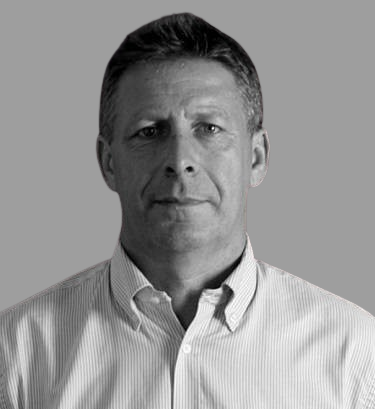Axial3D: Enhancing surgical planning & improving patient outcomes
Roger Johnston is a passionate entrepreneur. His specialties include business strategy, market positioning/product marketing, corporate development, sales and marketing, channel/partner development, venture capital/private equity, enterprise software, enterprise content management. With an excellent track record in international business development, marketing and sales track record, Roger has served a spate of industries including healthcare, financial services, oil and gas and government/federal. He has hands-on experience on growing companies (both product and services) in new markets and new geographies- from a business capitalization stage through to successful trade exits. His know-how on technology, investment and service delivery organizations has helped him create a niche in the industry.
He is the CEO of Axial3D, that specializes in patient-specific medical 3D imaging and modeling to enhance surgical planning, save time and costs, and improve patient outcomes. Axial3D aims at making patient-specific 3D models and 3D images easily accessible and affordable to physician teams globally, using its Segmentation-as-a-Service ™ technology to transform the care of their patients. Making each plan and treatment associated with a surgery bespoke to that patient to vastly improve their standard of care. In an interview, he speaks on an array of topics. Excerpts:
Conception of Axial3D
For the pre-operative planning of complex surgeries, such as orthopedics, trauma, neurology, cardiology, current medical imaging is often insufficient which does not allow clinical teams to confidently plan for surgery. This was the primary reason why Axial3D was conceived.
Axial3D – surgical care
Axial3D believes in democratizing the use of incredibly precise 3D imaging for patients. “Axial3D turns hard-to-understand 2D patient scans into incredibly precise 3D, that can then be printed, viewed on a tablet/phone to improve medical device manufacturers or used within a workflow to design patient specific implants and devices. With this new level of precision, clinical teams and patients now have access to a quality of medical imaging that has not previously been available at scale.” As a-Service platform running on the AWS cloud platform, the firm can provide its customers immediate results, without the need for them to buy and deploy any hardware or software and from any location, with the help of internet. “The fact that patients can entrust the firm with highest level of security and data privacy standards is yet another advantage.”
Point of care print labs
With the advent of consumer-cost-effective 3D printing, it has become possible for this technology to be adopted at a wider scale by different markets, with hospitals being a primary new adopter of the technology. This fact, with Axial3D’s scalable solutions has allowed point of care print labs to become even more prevalent. “Having a point of care lab with Axial3D’s technology allows hospitals to create 3D models from existing, traditional 2D medical images at scale. The most prevalent of which is in the creation of 3D printed preoperative planning models. Allowing surgeons to gain a much greater understanding of a patient’s pathology, unattainable from existing imaging. Meaning that hospitals can provide an entirely new standard of care, reducing time patients spend in operating theaters, dramatically reducing risks.”
Leveraging 3D imaging and modelling within healthcare
For healthcare providers around the world to scale their use of 3D imaging and modelling, enabling them to build these into the standards of care for all patients with specific conditions, the service needs to be super easy to use, massively scalable and responsive, and of course, affordable.
The two primary components of being able to deliver on this ambition include operating on massively scalable software platform that converts 2D patient scans into incredibly precise 3D files; and drawing up a comprehensive network of print and fulfilment partners around the world, who use the best 3D printer technology available. “We believe we have both of these fundamental components in place and at a level of capability that is not matched by any of our competitors.”
Case studies
Case study 1:
This shoulder revision surgery case is a great example of why surgeons are in need of better tools than the 2D imaging that’s currently being used within the current care pathway, maintains Roger. “Before the procedure, it was critical for the surgeon to evaluate if there was enough bony anatomy to carry out a reverse shoulder arthroplasty. CT imaging is difficult to interpret due to an existing metal implant, making it difficult for the surgeon to define a surgical plan with confidence.” The surgeon requested a patient-specific 3D model to help evaluate the bony anatomy and was used to educate the patient on their own operation. Being able to more accurately plan the procedure resulted in a reduction of 60 minutes within theatre. It also reduced the amount of equipment needed, which led to approximately $1000 saved in sterilization costs. The full case study can be found here.
Case study 2:
A patient presented with rapidly destructive osteoarthritis (RDO) in the right hip and needed an urgent hip replacement. (RDO is a rare condition that can lead to joint degeneration and destruction of the hip in as little as 6 months.) The surgeon wanted to have a clear view of how badly the hip joint had been impacted, but the 2D patient scans didn’t provide enough insight. The surgeon requested a 3D model of the patient’s anatomy which supported pre-operative planning and enabled the surgeon to make decisions safely and efficiently. “The model was also used to support a more targeted approach of selecting equipment before the surgery. In this instance, the surgery was 40 minutes shorter than it would have been with only 2D scans available during pre-operative planning. Resulting in less anesthesia for the patients and a faster recovery as a result.” The full case study can be found here.
Staying ahead of the competition curve
Axial3D sees patient-specific surgery as something that will be routine practice in the future. To make that possible, we understand that traditional images found in a hospital need to be scalably created into patient specific 3D models. “To make this a reality, Axial3D have approached the issues in scaling in a completely different and novel way. Traditionally, for patient specific models to be created, trained personnel take hours, one by one, to create these models using manual computer software. Something which is completely unscalable for the global need.” Axial3D have unblocked this traditionally unscalable human intervention, using its novel cloud segmentation service to create these patient specific models in a whole new way, meaning that hospitals and medical device companies across the world can now begin to feasibly create patient specific solutions for every patient.
The future ahead
Axial3D have created the world’s most scalable solution for creating patient specific 3D printed models. These allow surgeons to dramatically improve how they plan procedures, vastly improving the standard of care they can provide. As a company, our goal is simple – to make all surgical care patient specific. To do this, we will continue to leverage our existing innovations to make all 2D patient scans coming out of a hospital into patient specific 3D models. Doing this, we will continue to create new applications, changing the standard of medicine a hospital can deliver in novel diagnostic and treatment solutions.
Healthcare- challenges galore
The economics of healthcare funding and delivery around the world are relentlessly moving to where the cost of healthcare and the funding of healthcare (whether private insurance based or publicly funded) are diverging further and further each year, says this entrepreneur. “This increasing gap, which is unsustainable, can only be addressed by adopting transformative technologies that reduce the cost of delivering the same healthcare with better outcomes year on year.”
Healthcare sector- the way ahead
In the healthcare sector, many of us are very fortunate to have the opportunity to make a real difference to the lives of patients around the world. I try to focus my energies on this mission, and let the potential financial success flow as a consequence of this focus on our mission, as opposed to be the mission in itself, maintains Roger. “We’re fundamentally transforming how surgery is delivered throughout the world by converting patient scans into highly accurate 3D images and 3D printed models. Physicians globally use our anatomical models for pre-operative planning, briefing surgical teams and the patient consent process.”
Leadership traits
Says Roger that while he was growing up, he played a lot of sports and that taught him a lot of life skills that have translated into his working career – the value of hard work, a never-give-up attitude, the importance of team but also balanced with the respect for your opposition. “Fear can become an all-consuming emotion for some people, and this is often reinforced by other people’s view on “failure”. My personal choice is to recognize that if I try and do the right thing more often, combining this with hard work, then however things turn out, I won’t have any regrets. Life is very much a roller coaster, but rather than worrying all the time, I choose to enjoy the ride.”
“I know for sure I am not the cleverest person in the room, so I can only succeed in my leadership role if I have truly put together a great team who together add up to more than the sum of the parts” he signs off.

Company: Axial3D
Website: www.axial3D.com
Management: Roger Johnston, CEO
Founded Year: 2014
Headquarters: Belfast, Northern Ireland
Description: Axial3D specializes in patient specific 3D solutions for the healthcare industry




